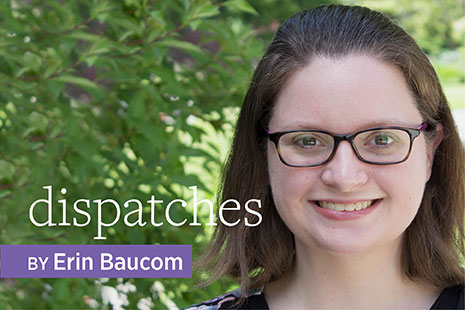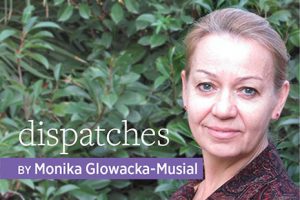
During a recent digital preservation committee meeting with my regional consortium, it occurred to me that many librarians are performing this type of preservation without even realizing it.
Digital preservation is a relatively young field. And as a result, it lacks established pathways and processes. What’s more, guidance for practitioners has been purposefully written from a high-level perspective to allow for flexibility by different types and sizes of institutions. But to translate lofty digital preservation theory into on-the-ground practice, we need workflow documents to break down the necessary steps required to complete a task.
A recipe is a great example. My mother makes an amazing chocolate mousse without written instructions. When I asked for the recipe, it took her four attempts to translate it from brain to paper. The next time I wanted to document one of her recipes, I watched as she cooked and wrote out exactly what she did.
Professional workflows operate the same way. Documenting those tasks that normally go undocumented creates evidence of past and present practices, provides an audit history of processes and tools, and prevents institutional memory from accruing in one person alone.
Workflows can be high-level and theoretical or they can be granular and concrete. High-level workflows are extremely useful when describing interrelated processes that are integral to a task. They are also useful when sharing documentation with fellow institutions, advocating to administrators for resources, or teaching broad concepts. OCLC has published great examples of high-level workflows in digital preservation.
Low-level workflows, meanwhile, are more like a recipe. They consist of a series of steps, most often written as instructions, that are followed the same way every time so that tasks are completed efficiently and consistently. These workflows are not necessarily simple; the documentation merely describes the process in such a way that implementors need to make few, if any, independent decisions when following it.
Workflow documents can be useful beyond their original purpose
There are many ways to document a workflow, such as visual diagrams, instructional outlines, narrative paragraphs, and spreadsheet-style checklists. With existing processes, I start with an empty surface and a pile of sticky notes. After you and your team think you have written all your steps on individual sticky notes, place them on a surface in the order that you perform the tasks, drawing arrows to indicate the direction of the steps. Getting the documentation correct on the first pass is rare, so stick and restick as needed, keeping the focus on the bigger picture. The Educopia Institute provides a process map and detailed guidance to help you produce your own born-digital workflow documentation in both visual and descriptive formats.
These workflow documents can be useful beyond their original purpose. For instance, sharing your workflows with partner institutions that are beginning or ramping up a program increases your ties to those institutions and saves them time and resources.
Examining your workflow documents allows you to take a critical look at your processes for gaps, outdated practices, or institutional biases in need of remediation. Examples of institutional biases in archives include how processing priorities are assigned, which donors are approached for potential collection materials, and how open the archive is to community input on arrangement, description, and access decisions.
Finally, share your workflow documents—or your analysis of your workflows—with administrators and funders. They can provide evidence to support arguments for new resources or potential policy changes and can increase the likelihood that these advocacy efforts will succeed.
Adapted from “Creating Adaptable Digital Preservation Workflows,” Library Technology Reports vol. 57, no. 4 (May/June 2021).


